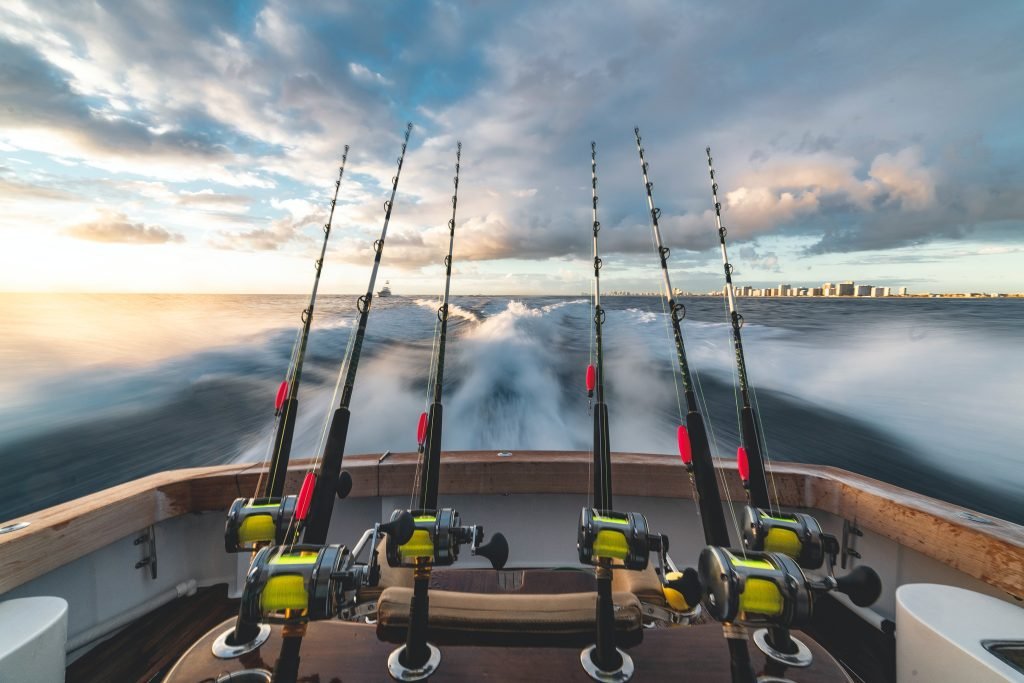
If you’re just getting started fishing and you don’t know which rod to choose, look no further.
With the market being flooded by hundreds of different models, all with a million configurations and styles, you can get overwhelmed very quickly.
I’ve been there too.
But once I’ve learned the basic concepts I’ll show you below, picking rods is just a matter of applying some filters on a tackle shop’s website.
From there you just compare the filtered options a little, read some reviews and that’s it – you’ve found the perfect rod for you.
In the following sections, I’ll cover everything you need to know about rods and their most important specs: action, power, length, type, material and some other personal factors you might want to consider.
So keep reading to put an end to this confusion when picking your rods.
The Big 3: Action, Power & Length
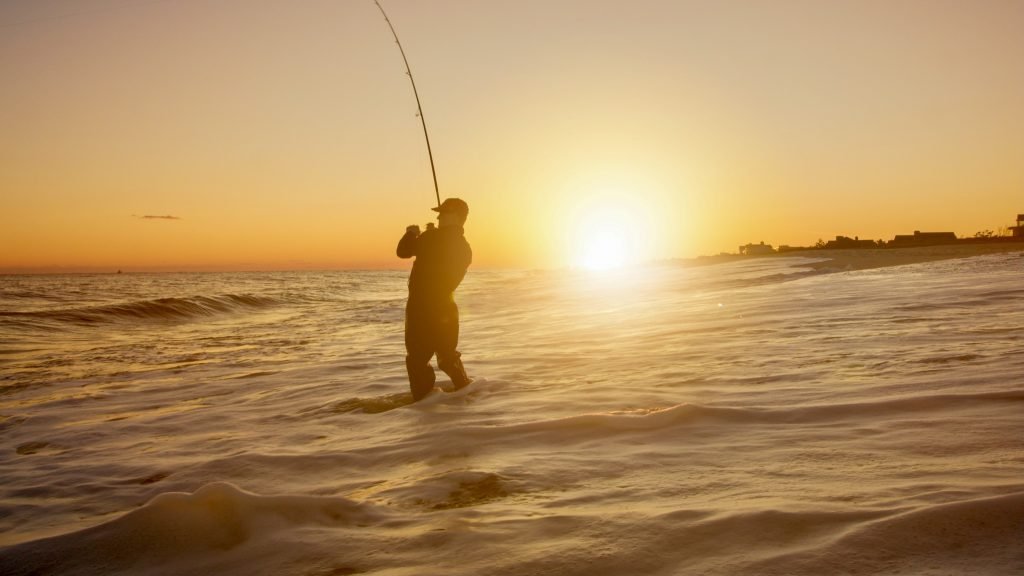
Action, power and length. I like to call them “The Big 3”, because they are by far the most important and the first you’re going to choose at when you pick a rod.
They influence your casting distance, accuracy, ability to handle fish, sensitivity and how your rod behaves overall. When you go to a rod’s product page, you first get hit by things like “ML”, “UL”, “H” and so on and words such as “fast”, “moderate”, “slow”. Let’s break down each of these and see which one is right for you.
Action
The words from above are used to describe where your rod will bend mostly. A fast action will bend mostly at the tip, while a slow action will bend towards the rod’s base.
There is one key thing here. Action will play an important role in your sensitivity. If you fish for smaller species such as trout, crappie or perch a fast action rod will help you feel bites better and ultimately set the hook more effectively. Fast actions rods are rigid, so they’re better for handling big fish and heavy loads.
Slow actions are something people use mostly for fun, to make the fight with a bluegill feel more intense. Slow actions make setting the hook a little more difficult, but once you set it fish have very little chance of escaping.
One more scenario where slower actions are recommended is when using treble hooks or other big single hooks (think crankbaits and spinnerbaits), as they give fish that extra moment to engulf the hook before you pull.
Keep in mind though, you should be using slower rods paired with a no-stretch line like braid or fluorocarbon. If you’re using stretchy monofilament, a stiffer rod will work better. Basically, you need to compensate the stiffness with either the rod or the line.
Moderate rods offer some of both worlds. I’ve seen them used especially for light saltwater fishing, as they offer the right balance between hook setting power and fun.
Power
The abbreviations from above describe how much force it takes to bend your rod. I think it’s obvious here – smaller fish need lighter rods and the big fish require a tougher, sturdier rod.
If you don’t know their meaning, here is a quick list:
- UL = Ultra Light;
- L = Light;
- ML = Medium Light;
- M = Medium;
- MH = Medium Heavy;
- H = Heavy;
- XH = Extra Heavy.
The same question comes again: how large is the fish you’re targeting? Lighter to medium rods for freshwater fish and some smaller saltwater species and heavy for big fish like catfish, carp and all the other saltwater monsters that roam the oceans.
Length
Here are a few questions that you need to ask yourself too.
Do you need a long casting distance or short casts are enough? Will you be fishing in tight spaces or open water? Do you need pin-point accuracy or you just need to cast your bait? Think about these a little.
Shorter rods are suited for smaller bodies of water and they’re better for casting accuracy rather than distance. If you’re fishing from a boat you might want a shorter rod too.
For larger lakes and saltwater, longer rods will provide with a longer casting distance, but less accuracy (in open water saltwater it doesn’t matter that much).
I would say that anywhere from 6′ to 8′ rods are short. Rods longer than this will be hard to use in places like ponds and creeks (not impossible though).
Material
There three main rod materials out there: graphite, fiberglass, and composites. Here I’ll show you the pros and cons of each.
Graphite
Pros:
- Sensitivity: Graphite rods are known for their high sensitivity, allowing you to feel even the slightest nibble.
- Lightweight: Graphite rods are lightweight, making them easy to handle and reducing fatigue during long fishing sessions.
- Stiffness: Graphite provides excellent stiffness and responsiveness, allowing for accurate casting and quick hook sets.
Cons:
- Brittleness: Graphite can be more brittle compared to other materials, making it more susceptible to breakage if mishandled or subjected to heavy loads.
Fiberglass
Pros:
- Flexibility: Fiberglass rods are known for their flexibility, providing a forgiving nature that can absorb shocks and reduce the likelihood of breaking.
- Affordability: Fiberglass rods are often more affordable compared to graphite and carbon fiber options.
- Durability: Fiberglass is less prone to breakage and can withstand rough handling.
Cons:
- Heavy: Fiberglass rods are generally heavier than graphite or carbon fiber, which may lead to fatigue during extended use.
- Reduced Sensitivity: Fiberglass is less sensitive than graphite, so anglers may not feel subtle bites as easily.
Composites
Pros:
- Blending Advantages: Composites combine the strengths of different materials, allowing for a balance of sensitivity, strength, and flexibility.
- Customization: Manufacturers can fine-tune the properties of composite rods to meet specific fishing requirements.
Cons:
- Cost: Composite rods can be more expensive than single-material rods.
- Complexity: The combination of materials makes the manufacturing process more complex.
Specialty Fishing Rods
Specialty rods are made to fulfil a distinguished application, such as portability or fishing in different environments. Here are some of the most popular types of specialty fishing rods:
Travel Rods
If you’re someone who loves to fish while traveling, a travel rod is a must-have. These rods are designed to be compact and lightweight, making them easy to pack and transport. They’re also versatile enough to handle a variety of fishing conditions, from freshwater streams to saltwater flats.
When choosing a travel rod, look for one that is easy to assemble and disassemble, with a durable carrying case for protection. Spinning rods are a popular choice for travel rods, as they are lightweight and easy to cast.
Also read: Best Compact Fishing Rods
Telescopic Rods
Telescopic rods are a type of travel rod that collapses down for easy transportation. They are designed to be compact, making them ideal for backpacking or hiking to remote fishing locations.
When choosing a telescopic rod, look for one that is made from high-quality materials and has a sensitive tip for improved accuracy. Telescoping rods are available in a range of lengths and power ratings, so choose one that is appropriate for the type of fishing you’ll be doing.
Keep in mind that the sectioning of these rods impact sensitivity and casting distance, so rods with less parts remain superior.
Also read: Best Telescopic Fishing Rods
Fly Fishing Rods
These rods are designed specifically for fly fishing, a method that involves casting a lightweight fly or lure with a special fly line. These rods are typically longer and more flexible , allowing for greater casting accuracy and control.
Fly rods are rated by weight, with lighter weights being appropriate for smaller fish and heavier weights for larger fish.
Ice Fishing Rods
Ice fishing rods are designed for use in cold weather conditions, typically on frozen lakes or rivers. These rods are shorter and stiffer than other types of fishing rods, allowing for greater control when fishing through a hole in the ice.
When choosing an ice fishing rod, look for one that is short and stiff, with a sensitive tip for improved accuracy. Telescoping rods are a popular choice for ice fishing, as they can be collapsed down for easy transportation.
Also read: Best Ice Fishing Rods for Panfish
Caring for Your Fishing Rod
Caring for a rod might seem obvious, like not slamming it in a tree or not tossing things on it in the car’s trunk. But I still feel like adding some advice here to make sure you take proper care for your poles.
Clean Your Rod Regularly
Cleaning your rod after each use is essential to prevent dirt, debris, and salt buildup. which can corrode the rod’s components over time. Use a soft cloth or sponge to wipe down the rod and remove any dirt or salt. Avoid using soap or detergent, as they can damage the rod’s finish and components.
Store Your Rod Properly
Proper storage is crucial to prevent damage to your fishing rod. Always store your rod in a dry place, away from direct sunlight and extreme temperatures. Avoid stacking rods on top of each other, as this can cause them to bend or break. Consider investing in a rod holder or rack to keep your rods organized and safe.
If you don’t have one already, consider reading this article for finding a high-quality reliable holder.
Check Your Rod Guides
The guides on your fishing rod are essential for casting and reeling in fish. Over time, dirt, debris, and fishing line can accumulate on the guides, causing them to become damaged or corroded. Check your rod guides regularly and use a soft cloth or toothbrush to remove any buildup. If you notice any damage or corrosion, consider replacing the guides to ensure optimal performance.
Protect Your Rod During Transport
Transporting your fishing rod can be challenging, especially if you’re traveling long distances or on rough terrain. To protect your rod during transport, consider investing in a rod case or tube. These protective cases can help prevent your rod from bending or breaking during transport.
Avoid Overloading Your Rod
Overloading your fishing rod can cause it to bend or break, which can be costly to repair or replace. Always use the right fishing line and lure for your rod’s weight and power rating.
By following these tips, you can help ensure your fishing rod lasts for years to come.
Conclusion
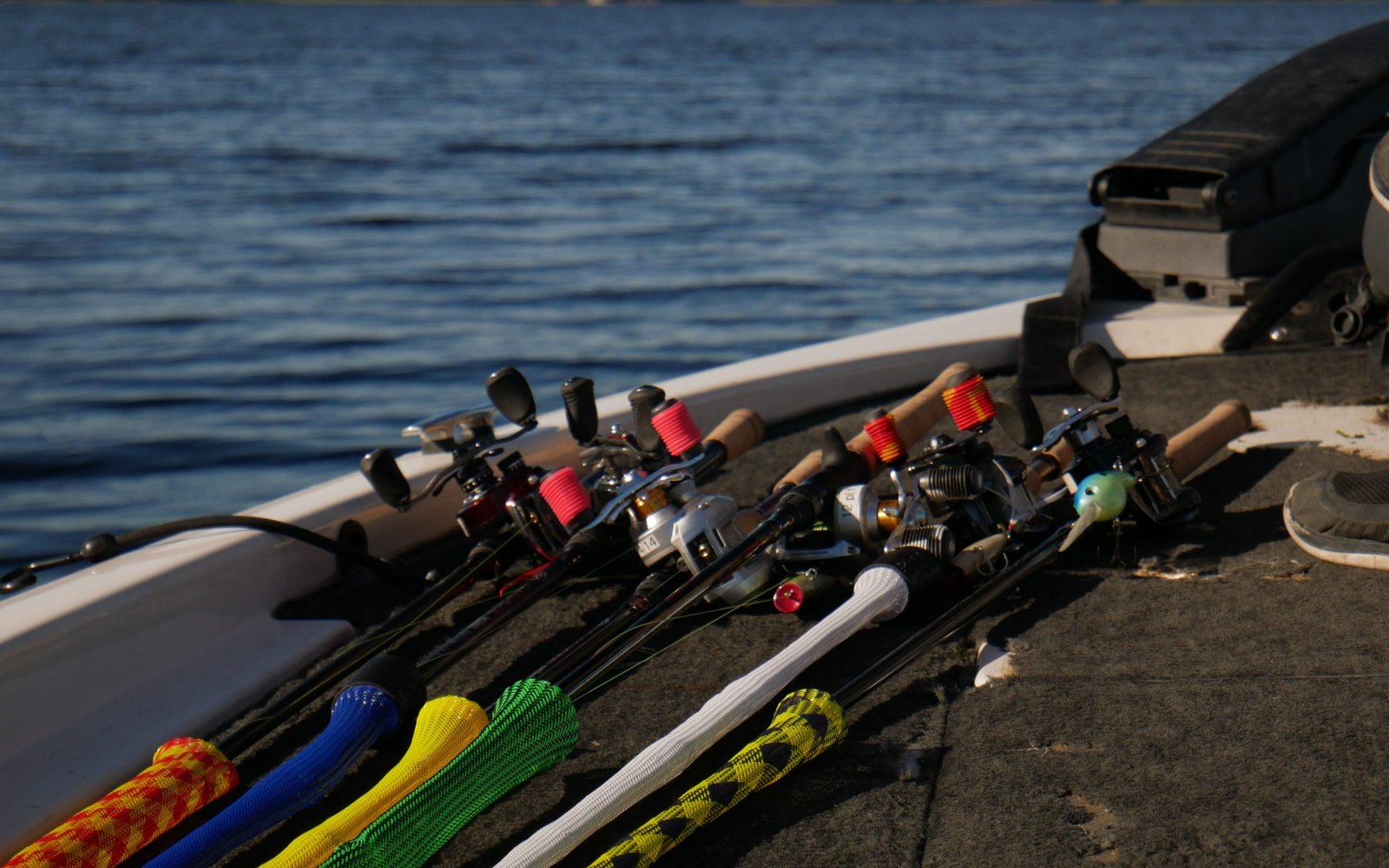
I know choosing a rod is hard at first, but it will get easier as you progress on your angling journey. At first, pick something like a fast action 7′ spinning rod. Something light, but not too light so you risk breaking on a slightly bigger fish. It’s going to work well for a bunch of freshwater predatory fish.
Remember to consider the features that are important to you, such as the rod’s power, action, and length.
Portability is also a key factor to consider, especially if you plan on traveling with your fishing gear. Telescopic rods are a great option for those who value portability and compact size.
Affordability is another important factor to consider. While high-end rods can offer superior performance, there are plenty of affordable options available that still provide excellent quality and functionality. If you’re interested in some specific rod models, check this article out (it also features some reel models, so you’ll be ready to order and fish).
Ultimately, the right fishing rod for you will depend on your personal preferences and needs. Take the time to research and test out different options to find the perfect fit for your fishing style. With the right rod in hand, you’ll be ready to hit the water and reel in your next big catch.
Tight lines!
Frequently Asked Questions
What are the key factors to consider when choosing a fishing rod and reel combo?
When choosing a fishing rod and reel combo, there are several factors to consider. The most important factor is the type of fishing you plan to do. Different types of fishing require different types of rods and reels. Other factors to consider include the size and weight of the fish you plan to catch, the type of line you will be using, and your personal preferences.
What are the top 5 saltwater fishing rod brands on the market?
There are many great saltwater fishing rod brands on the market. Some of the top brands include Shimano, Penn, Daiwa, St. Croix, and G. Loomis. These brands are known for their high-quality materials, innovative designs, and excellent performance.
How do I determine the appropriate length for my fishing rod?
The appropriate length for your fishing rod depends on several factors, including the type of fishing you plan to do, your personal preferences, and your physical abilities. As a general rule, shorter rods are better for smaller fish and lighter lures, while longer rods are better for larger fish and heavier lures. However, the length of your rod should also be comfortable for you to hold and cast.
What are the advantages of a telescopic fishing rod?
Telescopic fishing rods are a great choice for anglers who are short on space or who need a portable fishing rod. They are easy to transport and store, and they can be adjusted to different lengths depending on your needs. Telescopic rods are also often more affordable than traditional fishing rods.
What are the most important features to look for in a high-end fishing rod?
When looking for a high-end fishing rod, there are several features to consider. The most important features include the materials used in the construction of the rod, the sensitivity of the rod, the power of the rod, and the action of the rod. Other features to consider include the handle design, the number of guides, and the overall weight of the rod.
What is the best fishing reel for beginners?
For beginners, a spinning reel is usually the best choice. Spinning reels are easy to use and are versatile enough to handle a wide range of fishing situations. Look for a reel that is lightweight, durable, and has a smooth drag system. Some good options for beginners include the Shimano Stradic Ci4+, the Penn Battle II, and the Daiwa BG.


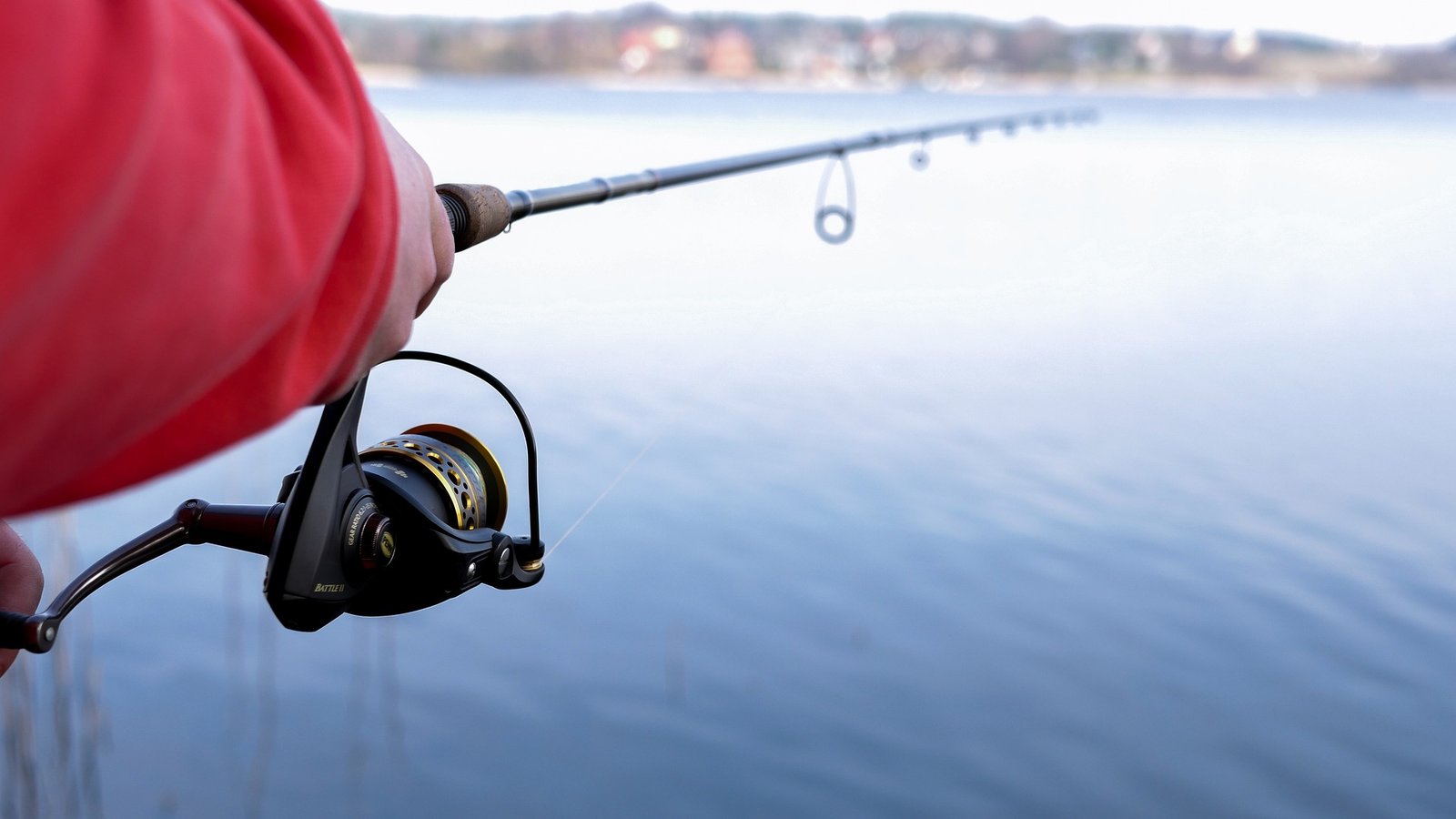
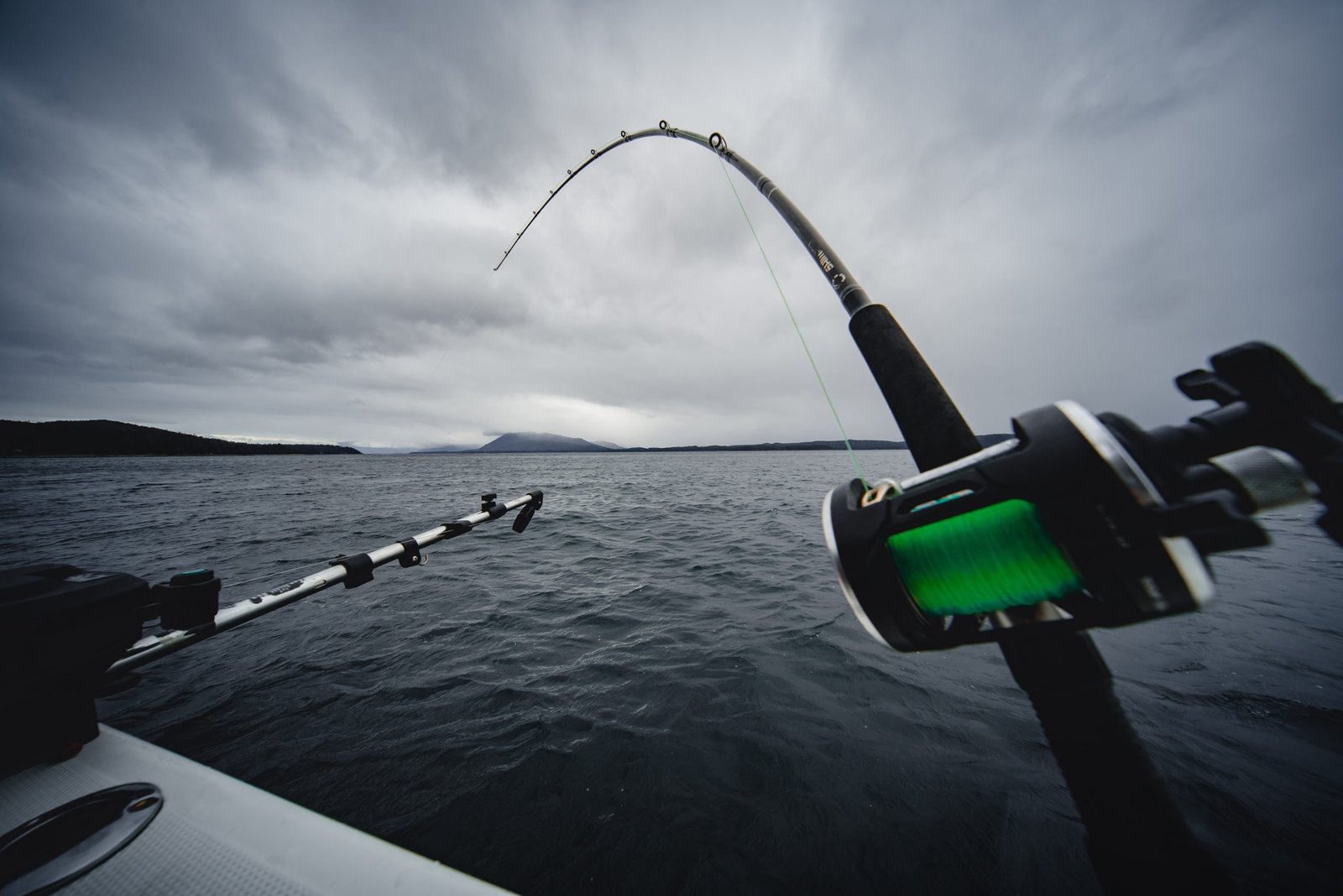

Pingback: Best Bass Fishing Rods: Top Picks for Anglers in 2023
Pingback: Best Fishing Rods for Beginners: Top Picks for Easy and Successful Fishing
Pingback: Best Fishing Rods Under $40: Affordable Options If You’re on a Budget
Pingback: Best Fishing Gear Gifts: Top Picks for Anglers in 2024